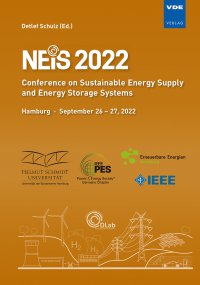Technical Concept to Realize the Combination of Vehicle-to-Grid and Vehicle-to-Home for Usage in Smart Buildings
Konferenz: NEIS 2022 - Conference on Sustainable Energy Supply and Energy Storage Systems
26.09.2022 - 27.09.2022 in Hamburg, Germany
Tagungsband: NEIS 2022
Seiten: 6Sprache: EnglischTyp: PDF
Autoren:
Freymann, Andreas; Maier, Florian; Schrodi, Thomas (Anwendungszentrum KEIM, Fraunhofer Institute for Industrial Engineering IAO, Esslingen am Neckar, Germany)
Loesch, Stefan; Wenzel, Alexander (Fraunhofer Institute for Manufacturing Technology and Advanced Materials IFAM, Bremen, Germany)
Adam, Luke (ProNES automation GmbH, Landau in der Pfalz, Germany)
Scheer, Paul (Fraunhofer Institute for Industrial Engineering IAO, Stuttgart, Germany)
Inhalt:
Passenger vehicles are parked 95% of their lifetime and in turn only 5% of their lifetime is used for actual mobility. Therefore, traction batteries of battery electric vehicles receive more and more attention for their usage as temporarily stationary storage devices to act as local renewable energy sources for buildings (vehicle-to-home; V2H) or to transfer energy to and from the public power grid (vehicle-to-grid; V2G). For an economical interaction, the knowledge of the battery’s flexibility to offer V2H and V2G services is of major importance. However, today V2H and V2G are used in combination. This in turn influences the flexibility as the vehicle’s battery is used for the grid and at the same time for the building. Therefore, maintaining transparency of the energy flows as well as being able to calculate a flexibility has been complicated by merging V2H and V2G. This work presents a technical concept that allows the combination of V2H and V2G based on open-source technologies. The concept consists of a specific system architecture for hard- and software, an approach to process relevant data and an approach to calculate a flexibility of the vehicle’s battery. The concept was deployed and tested within a public research project.


